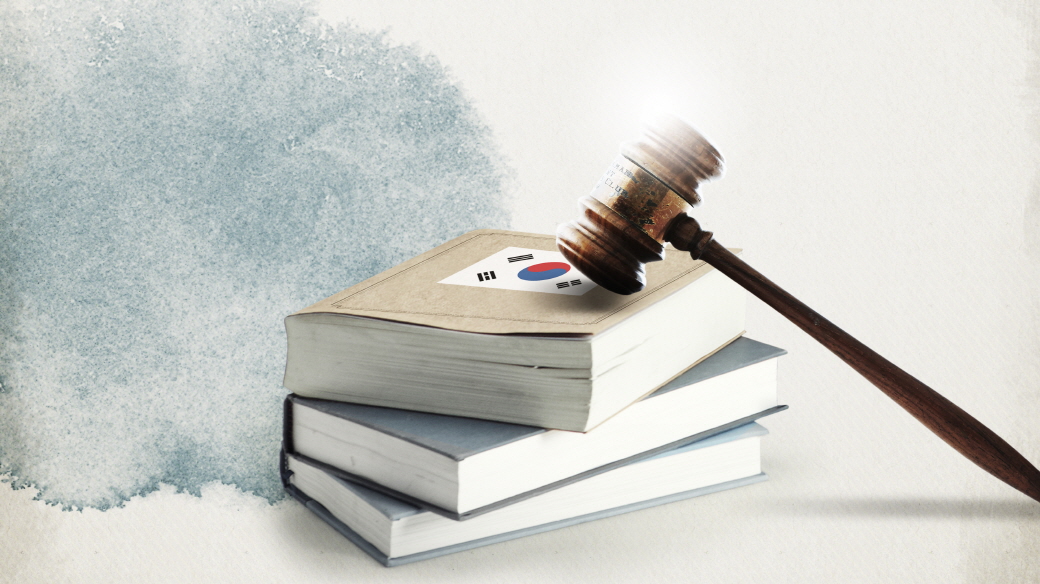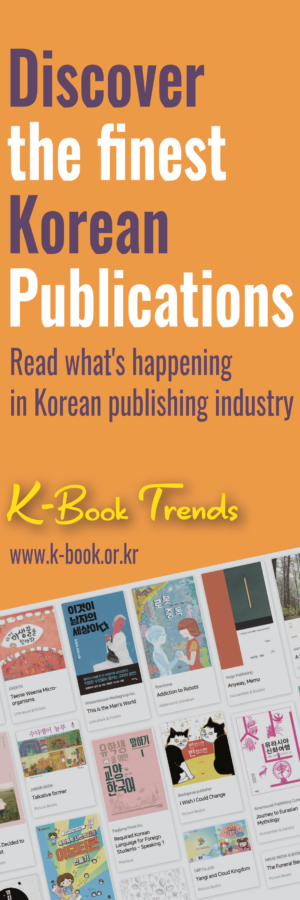Background of the general revision of copyright law
The Ministry of Culture, Sports, and Tourism recently announced that the copyright law will be generally revised in 14 years to reflect the changing environment of creative works and their usage and to organize the complex legal system. In February this year, the Ministry announced the “Copyright Vision 2030,” clearly exhibiting its will to generally revise the copyright law. The research team for the general revision of the copyright law composed of experts and the Korean Copyright Commission has been discussing directions for the revision based on the preceding research from the past. The final revision will be confirmed after collecting opinions from experts and people concerned.
Korea’s copyright law enacted in 1957 was first generally revised after 30 years in 1987. If the revision in 1987 was mainly focused on reflecting the changes in the international and domestic copyright environment, such as joining the Universal Copyright Convention (UCC), the next general revision conducted in 2006 reflected the generational change in which the use of copyright began to be weighted to digital platforms. And through the general revision this time, the copyright law will be significantly restructured to reflect the recent situation in which the creation and utilization of copyrights are carried out on a digital platform; especially, musical copyrights are now massively used with the advancement of the two-way online platform.
Trends of the recent revision of the copyright law in Korea
The Korean Copyright Act was enforced twice on November 26, 2019 (Act No. 16600, enforced on May 27, 2020) and February 4, 2020 (Act No. 16933, enforced on August 5, 2020). It has been revised to extend restrictions on copyrights. Looking at the major revisions, a lot of recent online use environments were reflected.
Foremost of all, it is noticeable that a new clause on the restriction of the author’s property rights that allows collateral reproduction was established (Article 35-3). This is an article that allows any photographs, voice-records, video-records, or works that can be seen or heard in the main work to be reproduced, distributed, performed, exhibited, or broadcast to the public without separate permission from the right holder of the work. As a result, if other works (music, video, pictures, choreography, etc.) are collaterally included in the process of filming, voice-recording, or video-recording the main object, a rule of thumb has been prepared, which can save the person from copyright infringement. The act was put into effect on May 27, 2010. Today we are ushering in the era of the 4th industrial revolution, and at the time when digital media usage becomes frequent, the production, distribution, and use of virtual reality (VR) and augmented reality (AR) contents through the ultra-high-speed, hyper-connected, and ultra-low delay networks implemented by 5G are particularly expected to become more active. Also, due to the nature of VR/AR contents that contain all or a portion of objects or backgrounds that exist in reality, the revision that allows collateral reproduction will contribute to the expansion of VR/AR contents’ production and use, not to mention the development of related industries. In addition, it is expected that producers will be able to safely engage in creative activities, free from the risk of copyright infringement, in various single-person media and content production environments.
A new provision that allows collateral reproduction has provided an applicable basis for cases that collaterally include other works to be exempted from responsibilities following a copyright infringement.
Meanwhile, a regulation (Article 35-4) was newly presented to facilitate the use of public cultural facilities regarding published works of unknown authors. If a cultural facility (public cultural facility) operated by the state or local government does not know the copyright holder of the published work or his/her residence even after considerable investigation, the materials stored in the cultural facility can be collected, organized, and analyzed for the purpose of preserving and providing them to the public. Also, this new clause allows works to use the opened materials and reproduce, distribute, perform, exhibit, or broadcast the works to the public. However, public cultural facilities cannot use works of unknown authors for commercial purposes, and the copyright holder of the published work may later request to cease the use of the published work and claim compensation. This regulation also took effect on May 27 this year.
Also, it is worth paying attention to the provision of expanding the scope of using works included in textbooks for publishers (Article 25-2). In other words, it is a new provision that allows a person who has published a textbook can reproduce, distribute, and publicly broadcast a published work included in the textbook to the extent necessary to use the textbook for its original use. This regulation went into effect on August 5 this year.
The current copyright law has regulations restricting the intellectual copyright of works used for school education, and it is stipulated that published works can be used in textbooks of elementary, middle, and high schools (Article 25-1). However, the regulation until today only allowed textbook publishers to include published works in textbooks, and it was still necessary to receive permission from copyright holders for other methods of use. However, according to the revised law, textbook publishers can now reproduce, distribute, and broadcast works contained in textbooks within the scope necessary for the use of textbooks, and use the works published in textbooks to provide more diverse educational content to assist textbooks. It can be produced, and it is also possible to provide it for distance education online.
Major contents of the general revision of the copyright law
First, due to the nature of services such as online music service or online video service (OTT) broadcast content, it is necessary to use a significant quantity of works within a short period of time. However, these fields are having difficulty checking multiple copyrights and neighboring copyrights and ask for permission each time. This is where the “Extended Collective Licensing” is introduced. It refers to “a system that gives the organization that intensively manages copyrights permission to use works from certain fields that have not been consigned to take care of.” However, if there is an explicit intention from the copyright holder to have his or her work excluded, it will be removed from the allowed list of copyrights accordingly. Through this Extended Collective Licensing, business operators can safely and conveniently obtain permission to use works, and it is expected that copyright holders will have a profit structure in which the profits from having their works used can be collected steadily. In addition, we plan to introduce supplementary measures to strengthen publicity by allowing public institutions to use undistributed funds resulting from expanded intensive management for copyright holders.
It also suggests civil solutions rather than criminal punishment for copyright infringement. With the development of digital creation tools and video-sharing platforms, people can now easily create works and consume other people’s works as creative materials for their own. Therefore, the possibility of daily use of works leading to copyright infringement is also increasing. Considering this, a measure to ease the scope of criminal penalties for non-profit and non-habitual copyright infringements and to halt the investigation if the relevant party is undergoing the mediation procedure of the Korea Copyright Commission (mediation-first idea) is expected to be pushed forward; instead, the civil compensation system will be strengthened to balance the protection of rights holders, thereby inducing civil settlement rather than criminal penalties for copyright disputes.
For non-profit and non-habitual copyright infringements, the scope of criminal punishment will be eased, and civil solutions will be further devised.
Furthermore, a “claim for additional compensation” will be implemented. So even though the creator transferred the copyright of his or her work to the user to raise the value of creation, which is the source of all content industries, and to prevent the work from being neglected in the distribution market and further promote usage of the work, if the profits of the creator and the copyright user (to whom the right was transferred) are too off-balance, the creator has the right to revise the contract or claim for additional compensation. However, for the stability of the copyright user, the compensation will be only claimable within a certain period with further discussions.
Also, when a legal entity proclaims copyright, the creator could reserve no rights at all until today under the “work for hire” regulation. However, further alternatives will be devised to improve the regulation and strike a balance regarding the usage of copyright between the legal entity and the creator it hires. Besides, the “right of publicity” will be actively promoted at the same time. As there is an increasing number of unauthorized usage of photos and signatures of Korean stars along with the expanding Korean wave across the world, the enactment of the “right of publicity” has become a hot topic of discussion at last.
Meanwhile, the upcoming general revision is expected to reflect social changes such as the so-called “contactless culture” that came to the surface with the unprecedented coronavirus pandemic and the evolution of industries and technologies related to copyright that took place since 2006. An exemption rule for copyright users will be newly implemented, which would enable unlimited use of works in the process of information mass-analysis (data mining), including the utilization of corpus for A.I. development. Also, real-time video broadcast based on the Internet, which has become universalized today, will be clarified within the copyright law. Meanwhile, a measure that compensates the copyright holder considering the changes in the educational environment, such as the growing replacement of school classes with online classes and allows unrestricted use of copyright works in classes, will be devised.
Outlook and influence of the general revision of the copyright law on the publication industry
As covered above, if a copyright system drastically changes in a short period of time, the standpoint of copyright holders and users tend to conflict with each other. Therefore, when finalizing the general revision of the copyright law, relevant authorities must sufficiently listen to what the experts from each field (academia, content industry, etc.), relevant departments, and people concerned (independent creators, copyright organizations, copyright users, etc.) have to say. In particular, close communication with the publication industry is necessary, as it has the longest history among other cultural industries.
While I agree to the objective of implementing the “claim for additional compensation” and improving the regulation for “works for hire,” detailed review needs to be done as the copyright holders’ efforts that contributed to the rise of value may be undervalued and free-lunches regarding the profits created by the publishing industry could occur. Furthermore, with the introduction of the publicity right, possible issues surrounding the editing process, such as cover design, should be taken into consideration from various angles and come up with responsive measures such as establishing an exemption clause.
The relevant authority said it is planning to set up a realistic revision of the law by clarifying detailed clauses by receiving advice and having consultations with copyright experts and carrying out focused group interviews (FGI) with experts from each content area such as literature, music, and video. More than three public hearings will be held per field joined by the people concerned. I hope that all these efforts could lay a foundation for Korea as a strong cultural nation by forming an environment for proper copyright usage, walking in step with the 4th industrial revolution, and putting utmost effort into protecting the rights of copyright holders.















